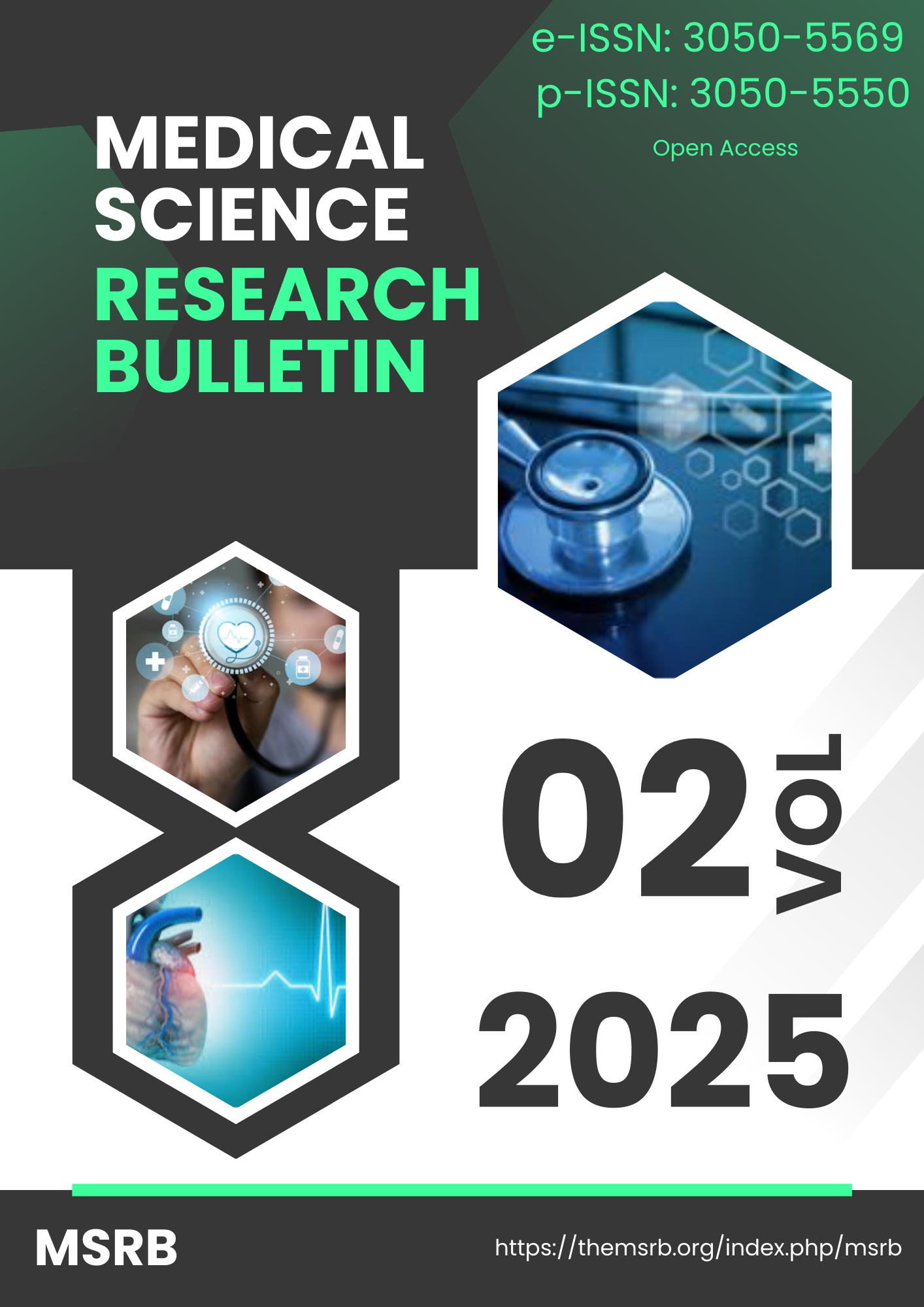The Effect of the Alcoholic Extract of Laurus Nobilis Leaves on LH Levels in White Male Rats
DOI:
https://doi.org/10.55677/TheMSRB/01Vol02E2-2025Keywords:
alcoholic extract; Laurus nobilis; LH levels; white male ratsAbstract
This research was carried out on adult male albino rats at the animal facility of the College of Education for Girls, University of Kufa, from September 2020 to August 2021. The aim was to explore the protective effects of the ethanolic extract of Laurus nobilis leaves on luteinizing hormone levels in male albino rats subjected to oxidative stress. The study involved 24 male rats of the species Rattus, each 12 weeks old and weighing between 150 and 300 grams. These animals were allocated into four groups, with each group containing six rats. The first group, which served as the negative control, received only water. The second group, acting as the positive control, was given hydrogen peroxide (1 mL per 200 grams of body weight). The third group was administered the ethanolic extract of Laurus nobilis leaves (300 mg per kg of body weight). The fourth group received both the ethanolic extract of Laurus nobilis leaves (300 mg per kg of body weight) and hydrogen peroxide (1 mL per 200 grams of body weight). All groups of rats were dosed orally using a stomach tube for 60 days. Body weights were recorded before and after the treatments. Upon conclusion of the experiment, the rats were euthanized using diethyl ether anesthesia, and blood samples were drawn directly from the heart via a syringe. Blood was collected through cardiac puncture for the purpose of biochemical and hormonal analysis. The results indicated a significant reduction (P<0.05) in luteinizing hormone (LH) levels in the positive control group as opposed to the negative control group. Conversely, administering the ethanolic extract of Laurus nobilis leaves caused a notable increase (P<0.05) in the average levels of this hormone in all treated groups compared to the positive control group. The findings of this research suggest that the ethanolic extract of Laurus nobilis leaves, due to its antioxidant capabilities, can shield against the damaging effects and oxidative stress caused by hydrogen peroxide, aiding in the preservation of tissue structures and preventing pathological changes.
References
Costa, D.C.; Costa, H.S.; Albuquerque, T.G.; Ramos, F.; Castilho, M.C.; Sanches-silva, A. (2015). Advances in phenolic compounds analysis of aromatic plants and their potential applications. Trends Food Sci. Technol.45, 336–354.
Darbandi, M.; Darbandi, S.; Agarwal, A.; Sengupta, P. Damayanthi Durairajanayagam, D.; Henkel, R.; Sadeghi, M.R. (2018). Reproductive Biology and Endocrinology; 16:87.
Guyton, A. C.; Hall, J. E. (2021). Textbook of medical physiology. 14thed. Pp: 1011- 1025.
Han, J.W.; Jeong, J.K.; Gurunathan, S.; Choi, Y.J.; Das, J.; Kwon, D.N.; Cho, S.G.; Park, C.; Seo, H.G.; Park, J.K.; Kim, J.H. (2016). Maleand female-derived somatic and germ cell-specific toxicity of silver nanoparticles in mouse. Nanotoxicology, 10, 361–373.
Khan, V.; Najmi, A. K.; Akhtar, M.; Aqil, M.; Mujeeb, M. and Pillai, K. K. (2012). A pharmacological appraisal of medicinal plants with antidiabetic potential. J. Pharm. Bioallied. Sci., 4:27.
Patton, P.E.; Battaglia, D.E. (2007). Office andrology. New York: Humana Press.
Preston, R. R. and Wilson, T. E. (2013). Lippincott's illustrated reviews: Physiology. Pp: 446-448.
Rathnakar, U. P.; Hashim, S. K.; Sudhakar, P.; Shenoy; Ashok; Gopalakrishna H.N.; Nandita; Farsana; Siddique. (2011). Hypoglycaemic activity of a polyherbal product in alloxan induced diabetic rats. Drug Invention Today, 3 (3). pp. 1-2.
Reis, P.M.C.; Mezzomo, N.; Aguiar, G.; Senna, E.; Hense, H.; Ferreira, S.R.S.; (2018). Ultrasound-assisted emulsion of laurel leaves essential oil (Laurus nobilis L.) encapsulated by SFEE. J. Supercrit. Fluids, http://dx.doi.org/10.1016/j.supflu.2018.11.018.
Vardapetyan, H; Tiratsuyan, S.; Hovhannisyan, A.; Rukhkyan, M.; Hovhannisyan, D. (2013). Phytochemical composition and biological activityof Laurus nobilis L. leaves collected from two regions of South Caucasus, Journal of Experimental Biology and Agricultural Sciences 1:45-51.








